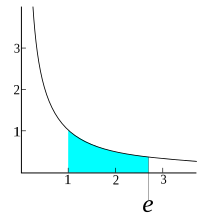
Responses of invasive and native plants to different forms and availability of phosphorus.
Sign Up to like & getrecommendations! Published in 2022 at "American journal of botany"
DOI: 10.1002/ajb2.16081
Abstract: PREMISE Many studies have assessed the various responses of alien plants to changes in overall nutrient or different nitrogen (N) availabilities. However, in natural soils, nutrients are present as different elements (e.g., N and phosphorus… read more here.
Keywords: phosphorus; responses invasive; availability; invasive native ... See more keywords

Dietary overlap and selectivity among mountain steppe river fish in the United States and Mongolia
Sign Up to like & getrecommendations! Published in 2023 at "Ecology and Evolution"
DOI: 10.1002/ece3.10132
Abstract: Abstract Lotic systems in mountain regions have historically provided secure habitat for native fish populations because of their relative isolation from human settlement and lack of upstream disturbances. However, rivers of mountain ecoregions are currently… read more here.
Keywords: nonnative species; dietary overlap; native species; mountain steppe ... See more keywords

Who is reporting non‐native species and how? A cross‐expert assessment of practices and drivers of non‐native biodiversity reporting in species regional listing
Sign Up to like & getrecommendations! Published in 2023 at "Ecology and Evolution"
DOI: 10.1002/ece3.10148
Abstract: Abstract Each year, hundreds of scientific works with species' geographical data are published. However, these data can be challenging to identify, collect, and integrate into analytical workflows due to differences in reporting structures, storage formats,… read more here.
Keywords: practices drivers; reporting non; biodiversity; native species ... See more keywords

Natives and non‐natives plants show different responses to elevation and disturbance on the tropical high Andes of Ecuador
Sign Up to like & getrecommendations! Published in 2017 at "Ecology and Evolution"
DOI: 10.1002/ece3.3270
Abstract: Abstract The aim was to assess patterns of plant diversity in response to elevation and disturbance in a tropical mountain. The study area was located in north‐central portion of the Eastern Cordillera of the Ecuadorian… read more here.
Keywords: disturbance tropical; native species; non native; elevation disturbance ... See more keywords

Persistence at the final stage of volcanic island ontogeny: Abiotic predictors explain native plant species richness on 111 remote Pacific atolls
Sign Up to like & getrecommendations! Published in 2018 at "Ecology and Evolution"
DOI: 10.1002/ece3.4680
Abstract: Abstract Aim The final island ontogeny of the general dynamic model (GDM) (i.e., before island submergence) in tropical oceans corresponds to the coral atoll stage. Here, we examined whether the species richness of native vascular… read more here.
Keywords: native species; island ontogeny; atoll; species richness ... See more keywords

Role of priority effects in invasive plant species management: Early arrival of native seeds guarantees the containment of invasion by Giant ragweed
Sign Up to like & getrecommendations! Published in 2023 at "Ecology and Evolution"
DOI: 10.1002/ece3.9940
Abstract: Abstract Empirical evidence shows that early arrival of native species, which induces the priority effects, can contribute to invasive plant species containment. However, more systematic studies are required to test the applied relevance of the… read more here.
Keywords: priority; native species; invasive plant; plant species ... See more keywords

Contribution of non‐native plants to the phylogenetic homogenization of U.S. yard floras
Sign Up to like & getrecommendations! Published in 2019 at "Ecosphere"
DOI: 10.1002/ecs2.2638
Abstract: Cultivation and spread of non‐native plant species may result in either phylogenetic homogenization (increasing similarity) or differentiation (decreasing similarity) of urban floras. However, it is unknown how non‐native species influence homogenization of cultivated versus spontaneously… read more here.
Keywords: homogenization; non native; phylogenetic homogenization; yard floras ... See more keywords

Getting ahead: exploitative competition by an invasive lizard
Sign Up to like & getrecommendations! Published in 2020 at "Behavioral Ecology and Sociobiology"
DOI: 10.1007/s00265-020-02893-2
Abstract: Biological invasions are a contemporary global threat because invasive species can have substantial negative economic and ecological impacts. Invasive species can outcompete native species through two main mechanisms: interference competition (direct, negative interactions like aggression)… read more here.
Keywords: native species; exploitative competition; competition; wall lizard ... See more keywords

Belowground competition drives invasive plant impact on native species regardless of nitrogen availability
Sign Up to like & getrecommendations! Published in 2017 at "Oecologia"
DOI: 10.1007/s00442-017-4039-5
Abstract: Plant invasions and eutrophication are pervasive drivers of global change that cause biodiversity loss. Yet, how invasive plant impacts on native species, and the mechanisms underpinning these impacts, vary in relation to increasing nitrogen (N)… read more here.
Keywords: availability; invasive plant; native species; plant ... See more keywords

Introgression from non-native species unveils a hidden threat to the migratory Neotropical fish Prochilodus hartii
Sign Up to like & getrecommendations! Published in 2017 at "Biological Invasions"
DOI: 10.1007/s10530-017-1556-4
Abstract: Invasive species are one of the greatest threats to biodiversity, due to competition, predation, pathogen spread, and hybridization. The latter may remain undetected and impair the survival of species, due to genetic admixture and hybrid… read more here.
Keywords: native species; prochilodus; hartii; hybridization ... See more keywords

Functional distance and establishment of non-native species with complex life cycles
Sign Up to like & getrecommendations! Published in 2018 at "Biological Invasions"
DOI: 10.1007/s10530-018-1678-3
Abstract: More than 80% of animals have complex life cycles and undergo distinct changes in ecology and morphology during development. The strength and type of factors regulating each life-stage may differ as an organism may occupy… read more here.
Keywords: life cycles; native species; functional distance; complex life ... See more keywords